Introduction
Being lighter, smaller and more accessibly priced than Canon’s high-speed models the firm’s f4 L-series are popular with professionals and amateurs alike. The current 17-40mm f4L USM version was introduced in 2003, weighs 1.1 lb (500g), and has 12 elements in 9 groups (including Super UD glass element), and features an ultrasonic type AF motor. At $839 it’s a rightly popular model, particularly with landscape photographers who have little need of the faster and more expensive f2.8 model. This new lens sits between the two and features a four stop optical stabilizer and a revised optical formula consisting of 16 elements in 12 groups. This includes 2 UD and three aspherical elements, which sounds promising regarding CA and distortion. Minimum focus is pretty typical at 11” (0.28m) but with a 77mm filter thread and measuring 3.25 x 4.44″ (82.6 x 112.8mm) it’s bigger and heavier at 1.35 lb (615g) than you might expect.
The Canon EF16-35mm f4L IS USM is available now at $1,199.
Canon EF 16-35mm f/4L IS USM mountedon Canon EOS 5D Mark III: High image performance
With a DxOMark score of 22 points the Canon EF16-35mm f4L IS USM is generally a good performer. It has good peak sharpness, particularly in the center at 16mm from f4 onwards, reasonable transmission of 4.5Tstops and low vignetting, though it’s still noticeable wide-open, particularly in the extreme corners at 16mm and more generally in the periphery at 35mm. Sharpness varies throughout the zoom range, as you might expect with a zoom but thanks to some curvature of field this lens has a rather complicated optical performance. At 28mm the lens has somewhat soft corners at full aperture, a marked increase in sharpness across the field at f5.6 and then at f8 a return to the lower edge performance seen at f4. Geometry is good though (particularly at 20mm); there’s no difficult to correct moustache type distortion, only some barrel distortion at 16mm and slight pincushion from 24mm.
Perhaps the most notable aspect of this lens’ performance is in its lateral CA suppression, which is excellent in an ultra-wide angle lens like this.
 |
 |
 |
 |
| Tokina AT-X 16-28 F2.8 PRO FX Canon | 849 | 22 | 17 |
| Canon EF 16-35mm f/2.8L II USM | 1399 | 22 | 14 |
| Canon EF 16-35mm f/4L IS USM | 1199 | 22 | 15 |
| Canon EF 16-35mm f/2.8L USM | 1674 | 20 | 14 |
| Sigma 17-35mm F2.8-4 EX DG Aspherical HSM Canon | 350 | 20 | 11 |
| Canon EF 20-35mm f/3.5-4.5 USM | 299 | 19 | 14 |
| Sigma 17-35mm F2.8-4 EX Aspherical HSM Canon | 700 | 19 | 11 |
| Sigma 12-24mm F4.5-5.6 EX DG HSM II Canon | 1400 | 15 | 12 |
| Sigma 12-24mm f4.5-5.6 EX DG Canon | 840 | 14 | 8 |
The Canon EF 16-35mm f4L is the best performing Canon ultra-wide so far but it’s only marginally ahead of the EF 16-35mm f2.8L USM and, surprisingly perhaps, a little behind the highly regarded Tokina AT-X 16-28mm f2.8 Pro FX in peak sharpness.
Canon EF 16-35mm f/4L IS USM versus Canon EF 16-35mm f/2.8L II USM versus Canon EF 17-40mm f/4L USM all three mounted on Canon EOS 5D Mark III: Improved uniformity
Against the current models, which Canon say remain in the line-up, the new addition performs well but it’s not quite as convincing a lead as you might hope for. The new model is sharper across the frame at the wider focal lengths but most gains are made in the outer field, and even then they’re really only slight.
Some more pronounced complex curvature of field prevents the new model from out-performing the others at longer focal lengths. To be fair the new lens performs very well at 35mm up to f8, though the performance at f11 is disappointing compared with the venerable 17-40mm f4L. However lateral chromatic aberration suppression is far superior in the new model and the gains, while slight in some cases more in others, are not to be ignored.
Conclusion
Adding stabilization in a lens like this is targeting videographers more than stills photographers, where the wide field of view and steadying effect can be put to good use, but it’s a welcome addition all the same. The imaging performance is good, very good in fact, but it’s not without some shortcomings, particularly at the longer end where field curvature provides some unexpected results. Once those are understood and either avoided or worked around, the lens can be a very satisfying performer and at $1,199 this new model doesn’t seem over priced.


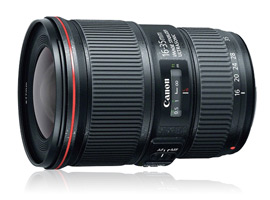


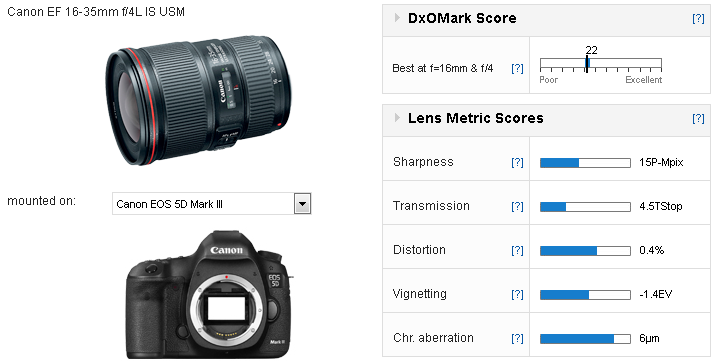
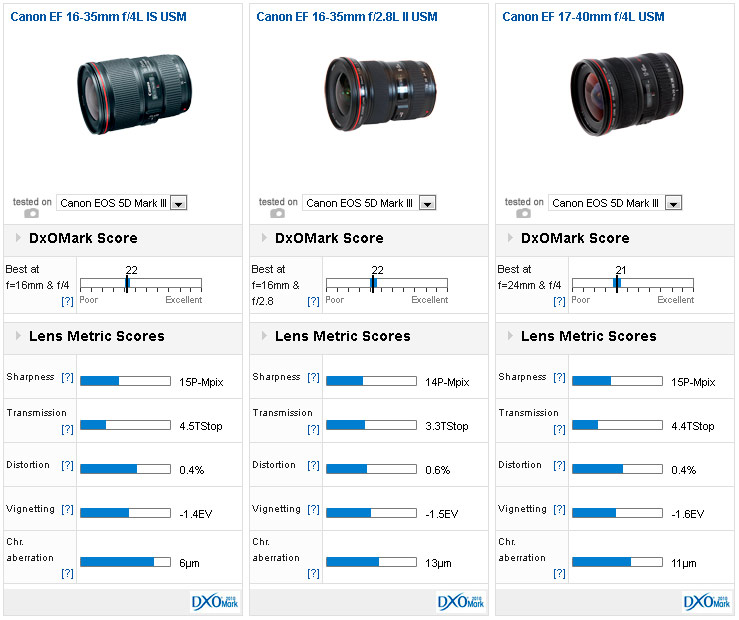
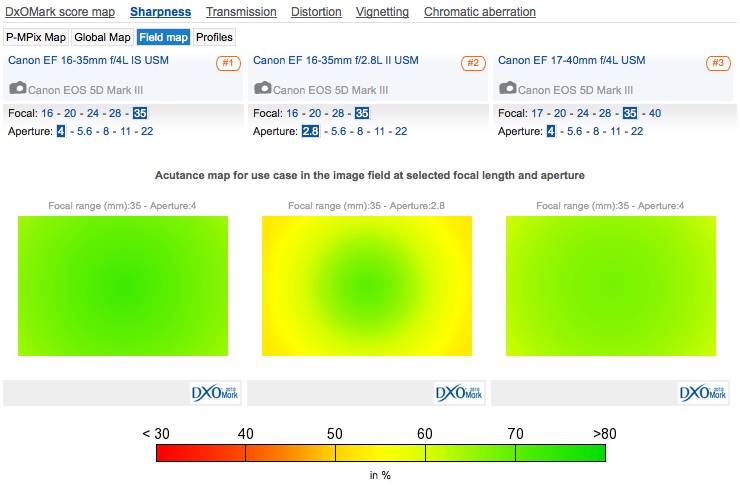
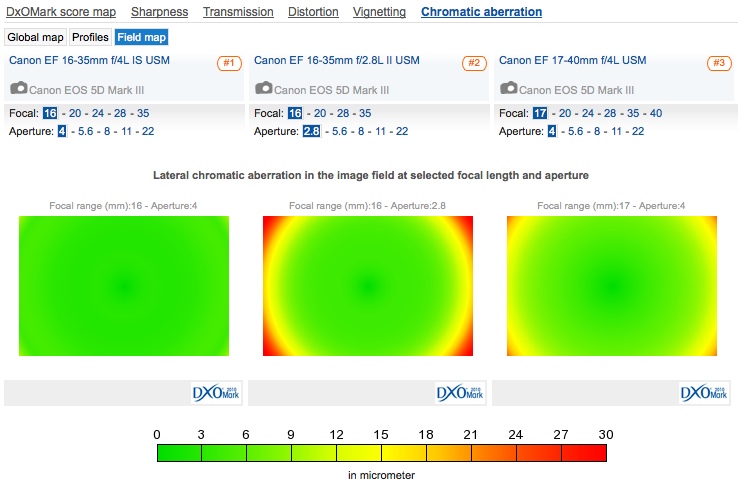
DXOMARK encourages its readers to share comments on the articles. To read or post comments, Disqus cookies are required. Change your Cookies Preferences and read more about our Comment Policy.